Properly controlling humidity levels is critical when cultivating plants in an enclosed indoor growing area like a grow tent or room. Maintaining suboptimal humidity can negatively impact transpiration, nutrient uptake, photosynthesis, disease resistance, and overall plant health.
Too much humidity increases risks of fungal pathogens and mold, while insufficient humidity slows growth and causes tip burning. Indoor gardens require active environmental management, since natural conditions lack the buffering effect provided out in the open field.
When setting up your controlled grow space, implementing the right humidity control and monitoring equipment needs to be a priority from the start. An environmental controller, humidifiers or dehumidifiers, vapor barriers, exhaust fans, and hygrometers constitute the key components for regulating humidity.
Beyond the gear itself, growers must have a solid foundational understanding of optimal VPD ranges throughout the different life cycle phases, as well as how ambient conditions, design choices, and grow methods relate to humidity.
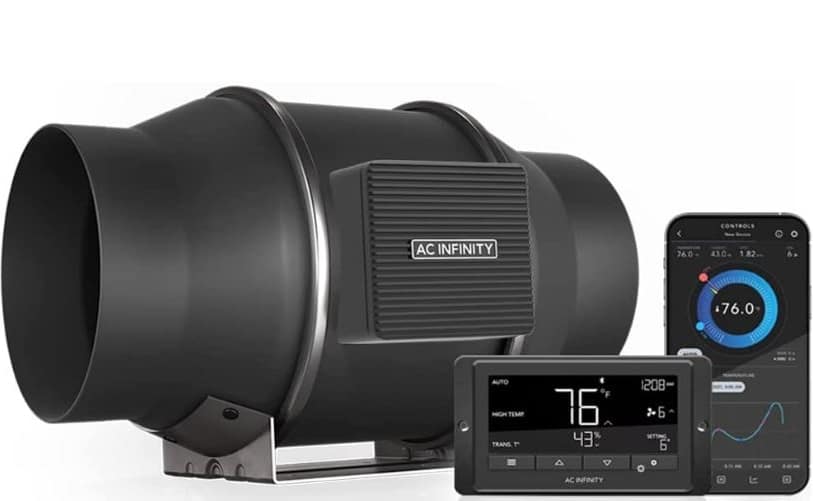
 AC Infinity CLOUDLINE T6, Quiet 6” Inline Duct Fan
AC Infinity CLOUDLINE T6, Quiet 6” Inline Duct Fan
- with Temperature Humidity Controller, Bluetooth App
- Ventilation Exhaust Fan for Heating Cooling Booster
- Grow Tents, HydroponicsDuct Size: 6” | Dimensions: 7.9 x 12.6 x 8.4 in.
Why Is It Important to Control Humidity in A Grow Tent?
Img: Grow Tent diagram scheme with grow lights, ventilation, plants and 5 gallon bucket systems
Maintaining proper humidity levels in a grow tent is vital to the health, vigor, and productivity of your indoor plants. Unlike an open garden with natural humidity regulation from the surrounding environment, grow tents create a completely isolated artificial ecosystem. Without controlled introduction and exhaust of air, water vapor accumulates and heat gets trapped inside the sealed tent.
Plants release huge amounts of moisture through transpiration as part of photosynthesis and nutrient uptake. High transpiration rates combined with restricted ventilation causes grow tent humidity to skyrocket rapidly. Conversely, airflow through passive ducting or fans can also excessively dry the air if unchecked. Such wide humidity swings damage plants and attract pests.
Optimal humidity for indoor gardens varies over the plant’s lifecycle, but generally falls around 60-70% during vegetative stage and 40-50% in flowering and fruiting stages. Each plant variety also has unique humidity preferences. Control systems maintain ideal ranges automatically.
Excessively high humidity inhibits transpiration, slows growth, causes nutrient lockout, and enables diseases like powdery mildew to take hold. Overly low humidity conversely desiccates leaf tissue, leading to tip burn, failed fruit set, and impaired metabolism.
Vigilant humidity management must occur perpetually over a grow tent’s lighting cycles. Integrated monitoring and response equipment effectively coordinates humidification or dehumidification seamlessly around the clock to avoid plant stress. Automated control systems paired with quality grow tent design provides reliable protection.
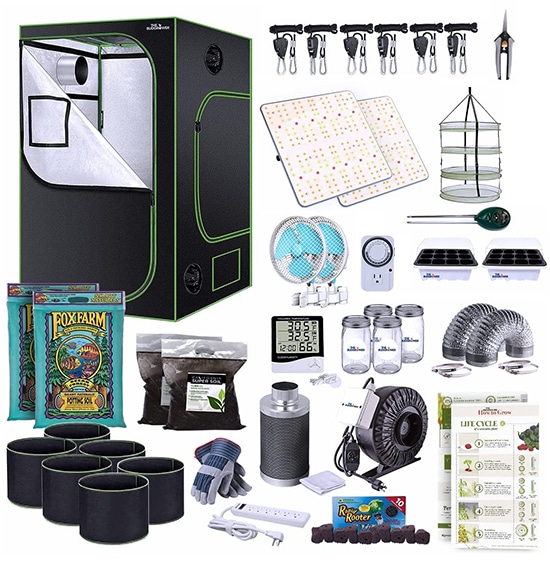 TheBudGrower Complete All-in-One Home Grow Solution 4x4x7ft- 2200W(2)
TheBudGrower Complete All-in-One Home Grow Solution 4x4x7ft- 2200W(2)
- LED lights specialty manufactured by VIVOSUN with Samsung LM301 diodes for FULL spectrum light
- The industries most durable grow tent – heavy duty 1680d oxford cloth
- Money & energy saving complete home grow tent kit
What Is the Ideal Humidity Range?
While specific optimal humidity set points differ between plant varieties and growth phases, most plants thrive around 40-60% relative humidity inside grow tents. Seedlings and clones require higher humidity up to 70%, while dense flowering and fruiting plants are more susceptible to mold above 50% humidity.
In addition to life cycle stage, ideal humidity range depends partly on day versus night conditions. Plants need elevated humidity in the dark period, when stomata close and transpiration halts. Lower 50% humidity during lights-on avoids excessive moisture while allowing better transpiration and respiration.
Ambient temperature also determines proper humidity set points, known as Vapor Pressure Deficit (VPD). Higher room temperatures allow more moisture to be held, so target humidity can be higher. Cooler tent temps require lowering humidity to maintain the same absolute moisture content.
An ideal grow tent environment maintains humidity between 40-60% in light hours, with 15-30% higher targets when dark. Temperature and humidity must be controlled in tandem, adjusting set points continually to sustain optimal VPD ranges as conditions fluctuate. Automated VPD controllers are the most precise and reliable method for maintaining peak plant performance.
While humidity alone gives a good baseline indicator for grow tent conditions, only coordinating temperature, CO2, and humidity together through dynamic VPD control can provide precision growth environments for premium plant development, health, and yield.
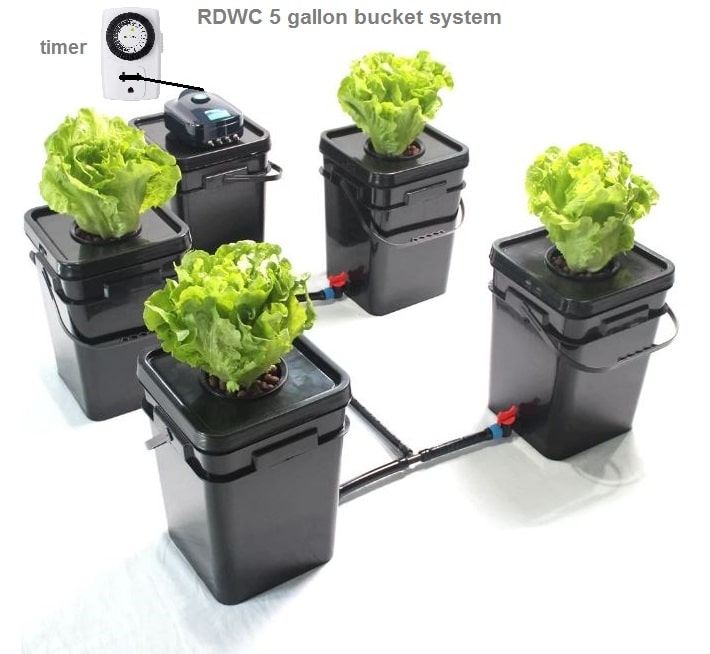
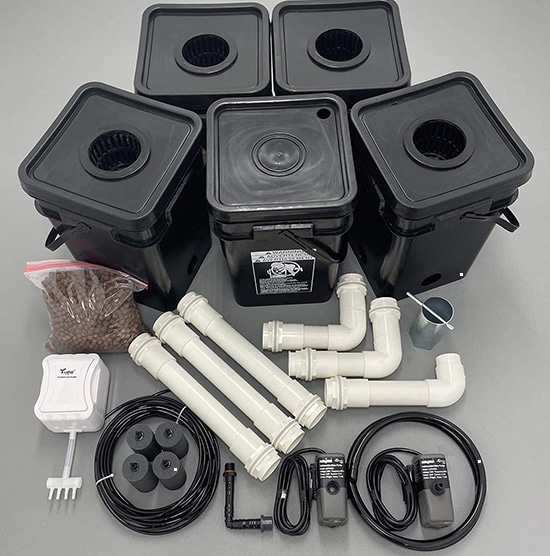 Recirculating Deep Water Culture (RDWC) Hydroponic Grow Kit System
Recirculating Deep Water Culture (RDWC) Hydroponic Grow Kit System
- Reservoir Bucket Connected to 4 Grow Buckets
- 400 Gallon/hour Circulating Pump
- Large 5 gallon square buckets, pre-drilled
Why Perfect Humidity Is Not Constant
While indoor gardeners strive to achieve ideal humidity ranges that maximize plant health and productivity, maintaining a single static humidity set point is actually detrimental. Environmental conditions fluctuate continually, so humidity targets must adjust accordingly to sustain optimal vapor pressure deficit (VPD).
A grow tent’s humidity demands change based on lighting, temperature, ventilation rates, plant transpiration cycles, and progressing growth phases. As an example, increased heat from high-intensity grow lights raises a tent’s temperature, in turn allowing more moisture to be held in the air to keep VPD balanced. Turning lights off cools the tent, necessitating humidity reduction.
Plants only transpire during daytime light hours, releasing vast amounts of moisture. At “lights out”, transpiration stops, meaning little dehumidification is needed. Without dynamic recalibration, fixed humidity settings cannot account for these diurnal variations.
Additionally, various plant life stages have distinct humidity preferences – young clones need almost twice as much humidity as mature flowering plants. Matching humidity to growth phases requires manual or automated set point adjustment.
Rather than picking one numerical humidity value, quality environmental controllers use VPD calculations to continuously optimize temperature and humidity in tandem. Dynamic equilibrium takes the guesswork out of humidity management for perpetually perfect yet fluctuating grow tent conditions.
How to Measure and Control Humidity in A Grow Room
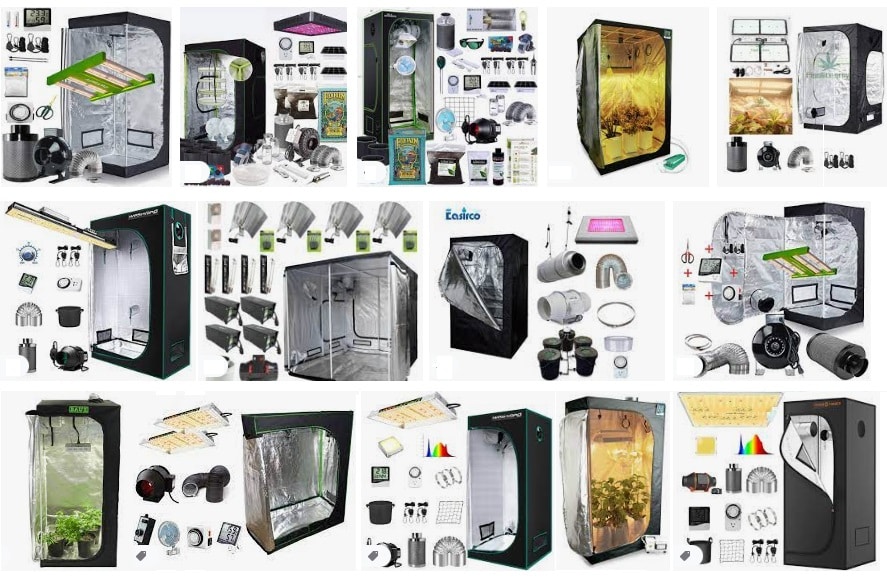
Img: Examples of Grow Tent Kits from many manufacturers and various designs and equipment
Accurately monitoring relative humidity using a hygrometer is the first step toward successful humidity control in an indoor garden. Mount humidistat sensors at plant level in multiple areas to account for microclimates within the grow room. Digital humidity probes allow remote data logging and integration with environmental controllers.
The most reliable method for handling both humidification and dehumidification automatically is using multi-function climate controllers tailored for horticulture. These systems coordinate humidifiers, dehumidifiers, foggers, heaters, exhaust fans, circulation fans, and more to precisely sustain perfect VPD levels as conditions change.
Humidifiers temporarily raise humidity levels using cold mist, ultrasonic, warm mist, evaporative, or steam types. Match humidifier technology to room size, required humidity increase, and budget. Similarly, specialized horticultural dehumidifiers remove excess moisture without overcooling grow rooms or enabling pathogen growth, as household units can.
Finally, moisture barriers prevent ambient humidity intrusion while insulating grow rooms. Plastic sheeting on walls and rubber gaskets around doors maintain internal humidity consistency. However, sufficient fresh air exchanges must occur to replenish CO2, reduce heat, and remove airborne ethylene.
With calibrated instruments, automated control systems, appropriate humidification/dehumidification gear, and insulated room construction, indoor gardeners can perpetually sustain humidity across optimal ranges for every plant variety and growth phase.
How to Reduce Humidity in A Grow Space
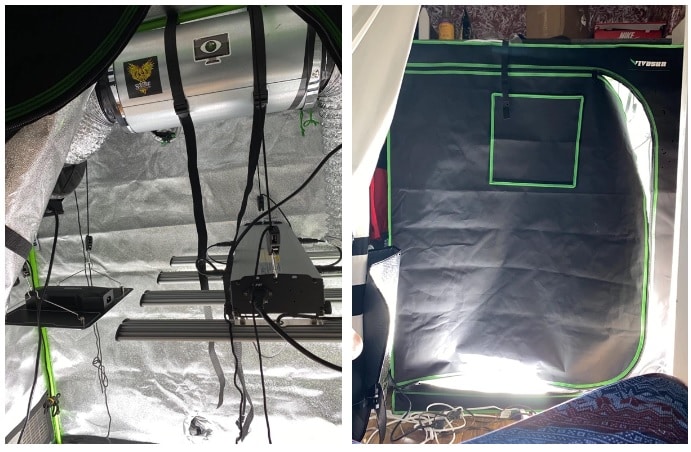
Img: Left photo inside view from above, right view outside the door is closed BloomGrow 1200W 48”x48”x80” Grow Tent Complete Kit
Managing humidity levels is crucial for indoor gardening success. While seedlings and young plants thrive in higher humidity, most plants require lower moisture levels during vegetative growth and flowering. Excess humidity can also encourage fungal diseases. Luckily, there are several effective methods to lower high humidity in your indoor grow area when needed.
Prevent Over-Watering of Plants
Before making intense humidity control investments, re-assess irrigation practices to avoid over-watering. Waterlogged medium locks moisture around roots and releases humidity into your grow space. Evaluate drainage properties of planting mix – faster-draining blends require less water while retaining suitable moisture for most plants. Amend native soils by blending in coarse materials like perlite, sand, vermiculite, or expanded clay pellets to reduce compaction and storage capacity.
Drip irrigation offers superior precision over manual top-watering, delivering measured quantities on timed schedules to each plant. Moisture sensors confirm exactly when re-watering is beneficial, eliminating guesswork. If pooling or standing water occur despite measured irrigation, improve drainage slopes across beds, or install drainage channels/pits below containers/beds to rapidly remove excess.
Check Planting Density to Improve Ventilation
Carefully arrange and space plants for adequate surrounding air movement, rather than cramming specimens tightly. Use trellising, cages, stakes and other supports to train and shape plants upward during the growth cycle. Open vertical channels between plant sites to enable air mixing from floor to ceiling. Position circulation fans to blow down these aisles, refreshing interior air and humidity.
During maturation, regularly remove old growth, excess shoots and interior shaded leaves to maintain an open framework allowing light and air penetration deep into each plant. Avoid miniature varieties and overly bushy types that congest airflow. Tall, columnar varieties grown in upright patterns improve ventilation most effectively.
Stagnant Water Elimination
In addition to over-watering plants directly, pools and films of standing water anywhere in the grow space raise humidity indirectly when evaporating. Routinely dump and refresh water in hydroponic reservoirs, overflow pans, drain collection pipes, and other system components prone to stagnation.
Stagnant water enables prolific growth of root pathogens like pythium, phytophthora, and fusarium. These fungus-like organisms rupture root tissues, blocking uptake of moisture and nutrients. Always maintain good sanitation to limit organic matter contamination and periodically change system water to prevent prolonged bacterial blooms.
Increase Ventilation Efficiency With Recessed Fans
Properly sized exhaust fans rapidly exchange interior air, expelling humid conditions while refreshing CO2 levels. HVAC engineers should calculate minimum cubic feet per minute (CFM) ratings required to fully replace your grow space’s volume based on dimensions and desired air exchanges per hour. Generally between 4 and 8 complete exchanges per hour are recommended for indoor gardens.
Duct booster fans installed in your ventilation exhaust ducting can also amplify outflow CFM rates. Controlled by a variable speed controller, booster fans only operate at higher speeds when the environment requires accelerated air changes. This reduces overall energy consumption.
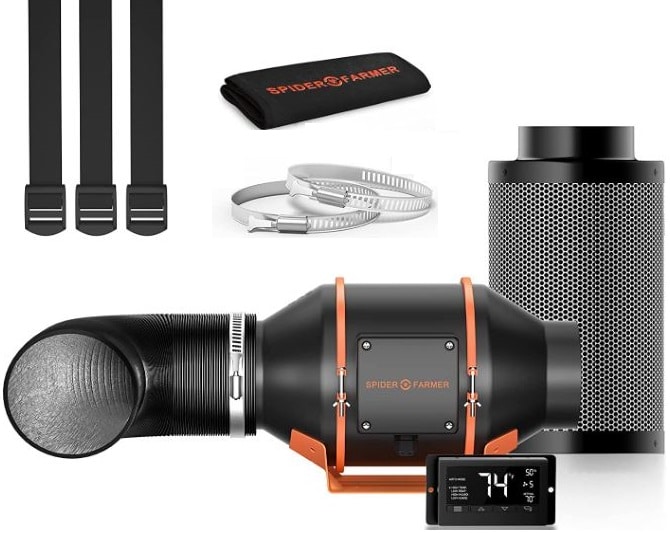
 Spider Farmer 4 Inch Inline Fan Carbon Filter Ducting Kit
Spider Farmer 4 Inch Inline Fan Carbon Filter Ducting Kit
- Exhaust Fan with Temperature Humidity Controller
- Hydroponics Grow Tent Ventilation Kit
- for Heating Cooling Booster, Grow Tents, Hydroponics
Creation of Air Holes
Installing screened openings directly in your grow room or tent walls improves passive ventilation significantly. Cover openings on the exterior side with hoods to block precipitation while enabling air intake. Position air holes on lower wall areas to take advantage of cooler incoming air, which can hold less moisture.
Small holes just larger than a quarter placed every 4–6 feet around the lower perimeter boosts refreshment of stagnant boundary layer air around plants. Larger holes or mesh panels across full wall segments further amplify ventilation potential. Opening size, number, placement, and screening mesh gauge impact ventilation rates controllably. Working air inlet holes into your infrastructure layout during construction is ideal.
Use an Air Conditioner
Air conditioning units actively lower indoor air temperature, which directly reduces the moisture holding capacity before condensation occurs (dewpoint). This effect allows growers to sustain moderately high 50-60% relative humidity levels beneficial for plant growth while preventing standing water and surface moisture thanks to cooled surfaces.
Portable or permanently installed AC units also dehumidify air directly using cold evaporator coils or desiccant filters, which condense then collect water vapor within the devices’ condensate channel. Just be sure to have a plan for the resultant water production from your air conditioner’s operation. Using cooled, dehumidified air is very effective for indoor garden spaces.
Insulate Your Grow Tent
Applying insulation sheets around the exterior surfaces of an indoor grow tent stabilizes interior temperature and humidity levels. Foam boards, fiberglass batts, or multi-layer foil sheets create an additional barrier resisting external weather fluctuations. This moderates the heat and moisture loads placed on ventilation, humidification, and dehumidification systems.
Caulk any cracks and seal off light leakage around door seams or ducting/cable penetrations to minimize humid air ingress. Rubber flaps or strip curtains installed on frequently opened tent access doors also reduce ambient humidity mixing while allowing entry. Stop conditioning excess make-up air unnecessarily by sealing the envelope tight.
Properly Select the Grow Light
When planning grow lighting, not all technologies produce equivalent heat and humidity loads. High intensity discharge lamps release substantial radiant and convective warmth compared to light emitting diodes, which convert more input energy directly to light rather than heat. Reduced thermal emissions translate to lowered evaporation rates.
Also consider light distribution – overhead vertical gardens with intracanopy lighting better contains moisture at leaf surfaces rather than allowing warm, rising plumes to envelop plants. Lower leaf zone humidity reduces risks of fungal diseases during flowering. Closely pairing output spectrum and power density to the crop’s needs also prevents aggressive transpiration that necessitates heavy-duty humidity extraction.
Use an Absorbent Soil
The water retention characteristics of the selected planting medium impacts evaporation rates and humidity generation. Soils comprised mostly peat, coconut coir fiber and sphagnum moss tend to absorb and relinquish lots of moisture during irrigation cycles – contributing humidity into your environment.
Fast-draining, porous blends made from materials like perlite, pumice, gravel and shredded tree bark hold far less water volume while still retaining sufficient moisture between irrigation events. Blending absorbent organic amendments with porous aggregates creates an ideal moisture balance that avoids over-saturation and high evaporation loss into your grow space air.
Consider Defoliation of The Plants
The water retention characteristics of the selected planting medium impacts evaporation rates and humidity generation. Soils comprised mostly peat, coconut coir fiber and sphagnum moss tend to absorb and relinquish lots of moisture during irrigation cycles – contributing humidity into your environment.
Fast-draining, porous blends made from materials like perlite, pumice, gravel and shredded tree bark hold far less water volume while still retaining sufficient moisture between irrigation events. Blending absorbent organic amendments with porous aggregates creates an ideal moisture balance that avoids over-saturation and high evaporation loss into your grow space air.
Ways to Increase Humidity in A Grow Tent
Managing low humidity can be just as detrimental to indoor garden health and productivity as excess moisture levels. When grow tent humidity drops far below optimal ranges, impacting transpiration, nutrient delivery and photosynthesis, active humidification solutions must be employed.
Rather than tolerating overly-dry air, various methods exist to safely elevate moisture content to ideal setpoints matching temperature and growth phase. This detailed guide explores both DIY and professional gear to properly elevate depleted humidity levels in indoor plant cultivation spaces.
Water Plants with A Sprayer
Using a pressurized mister or trigger sprayer when irrigating plants creates a fine water droplet distribution that instantly evaporates, raising local humidity around the foliage. Compared to flooding or drip methods, the increased surface area of microscopic sprayed droplets boosts humidity as they release vapor.
However, while handy pump sprayers rapidly boost humidity temporarily, the increase is often short-lived as ventilation systems catch up. It can also be difficult to raise humidity substantially during the day this way. But supplemental spraying just before lights-off helps maintain higher optimal dark period humidity levels. Repeat applications also compound the humidification effects.
Hang Damp Towels in The Grow Room
Soaking clean cotton towels in water then wringing out excess before hanging around the grow space allows evaporative humidification as the fabric progressively dries. Using porous natural fiber cloths enables fairly rapid moisture release compared to synthetic fabrics.
Position several damp towels spread throughout the room, rotating new ones efficiently to maximize surface area for evaporation. Combine this traditional technique with oscillating fans to blow air across the cloths, accelerating water vapor mixing. The scale of humidification depends on the number of damp cloths deployed.
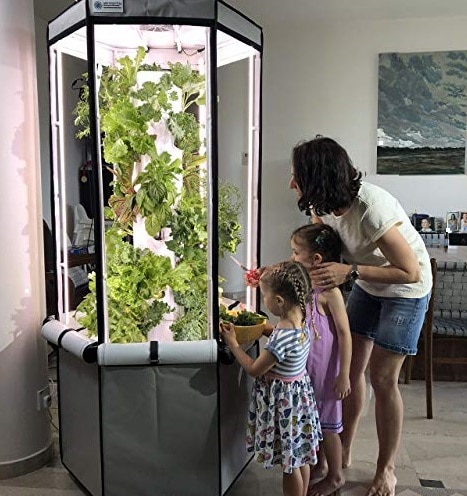
 Aerospring 27-Plant Vertical Hydroponics Indoor Growing System
Aerospring 27-Plant Vertical Hydroponics Indoor Growing System
- Easy to use aeroponic system for your home
- Fan - Grow Lettuce, Herbs, Veggies & Fruits
- Grow smart & eat healthy, 20 gallon water reservoir Grow Tent, LED Grow Lights
Put Away The Grow Lights
Prolonged photoperiods from high-intensity grow lights notably increase temperatures and reduce humidity as heat emissions and plant transpiration ramps up. During phases when plants need higher humidity, like propagation or early vegetative growth, putting lights out earlier in the day avoids excessive moisture loss.
For example, lowering the daytime interval from 16 hours to only 12 hours gives plants four extra hours of higher humidity in the dark. Humidity naturally increases at night as temperatures cool and leaf stomata close. Extending dark periods this way passively boosts moisture without active humidification. Just be careful to maintain required day length hours for normal flowering.
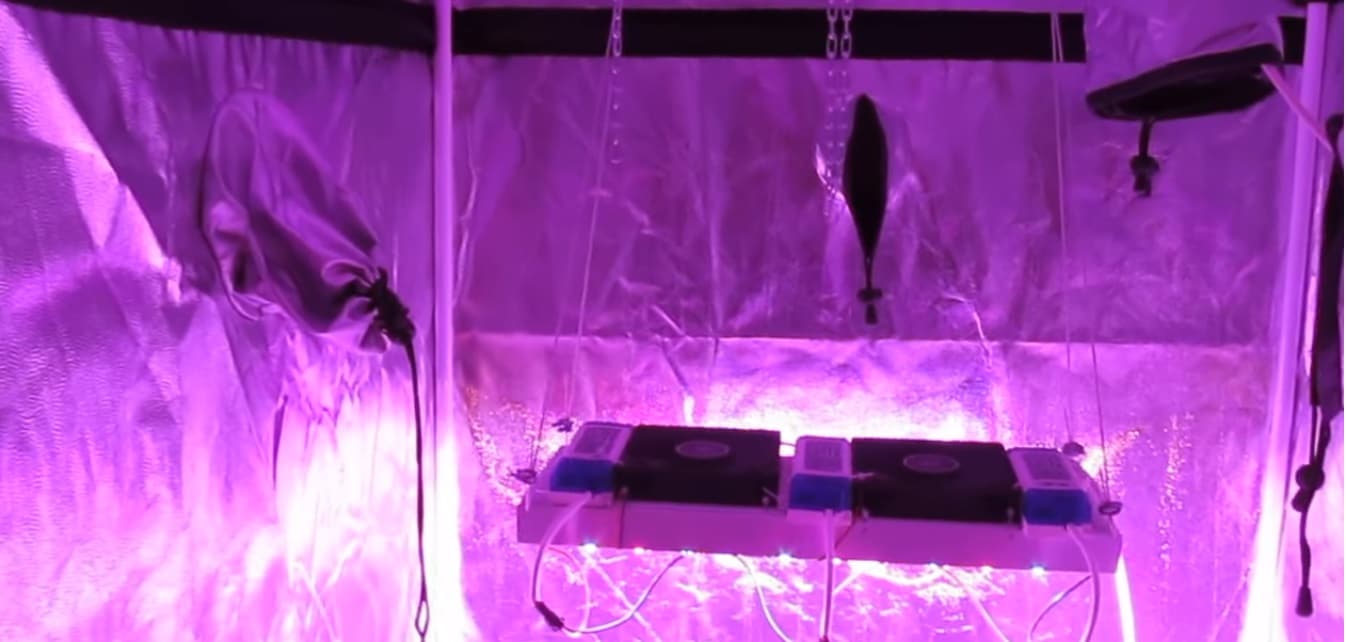
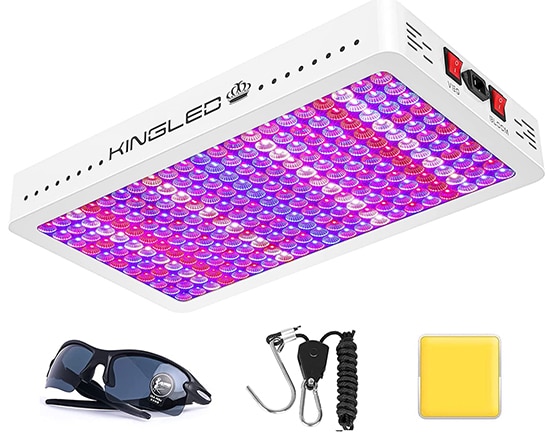 KingLED Newest 3000w LED Grow Lights with LM301B LEDs and 10x Optical Condenser 6x6 ft
KingLED Newest 3000w LED Grow Lights with LM301B LEDs and 10x Optical Condenser 6x6 ft
- Coverage Full Spectrum Grow Lights
- For Indoor Hydroponic Plants Veg Bloom
- 3 years Professional Service and free return for 90 days
Reduce The Fan Speed
Rapid air circulation from high-speed oscillating fans or ducted ventilation systems strips moisture from plant leaves, while exhausting humid interior air outside the tent before it can accumulate. While sufficient ventilation controls temperature and replenishes carbon dioxide, excessive fan speeds dehumidify aggressively.
Slowing down circulation and exhaust fans gives emitted vapor more time hovering around plants before getting forced out. This passively elevates local humidity to optimal levels without added equipment. Just monitor temperature rise from restricted ventilation to avoid excess heat buildup. Controlled through a variable speed controller, fan speeds can be precisely tuned to balance fresh air intake against undesirably dry conditions.
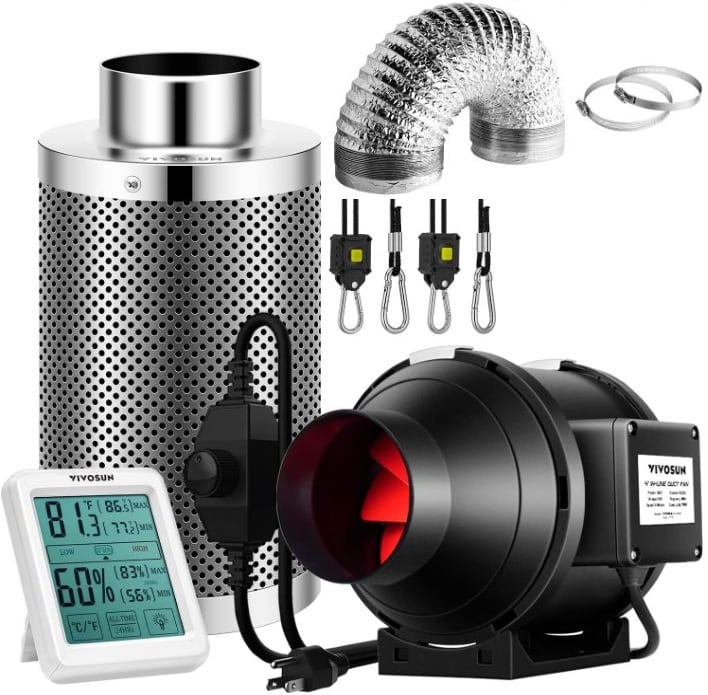
 VIVOSUN 4 Inch 190 CFM Inline Fan with Speed Controller
VIVOSUN 4 Inch 190 CFM Inline Fan with Speed Controller
- Temperature Humidity Monitor for Grow Tent Ventilation
- 4 Inch Carbon Filter and 8 Feet of Ducting
- Multi-Layer Air Ducting; 2 Rust-free Clamps;
Reducing the Air Conditioner’s Temperature
Cooling equipment like portable air conditioners or central HVAC systems remove both heat and moisture from indoor air. The evaporator coils condense water vapor out of the air, collecting it in tanks or drain lines. Lowering your indoor garden’s temperature setpoint therefore removes excess humidity automatically.
However, dropping temperatures too drastically hinders plant growth and health below optimal ranges, while enabling pathogen issues. When battling low humidity, raise the cooling thermostat setpoint a few degrees, which allows more humidity to remain present while still avoiding excessively hot conditions. This saves having to artificially humidify while supporting growth.
Use a Humidifier
Adding a humidifier to your grow tent setup is the most direct way to increase humidity. Cool mist and ultrasonic humidifiers that release water vapor into the air are ideal. Position the humidifier near the intake duct, so moisture is efficiently circulated by your ventilation system. Humidifiers with an automatic humidistat allow you to set your desired humidity level and the device will maintain it.
For larger tents, a powered humidifier with higher mist output will be necessary to influence the overall humidity. Humidifiers that run cool are better, since warm mist adds heat to your grow space. Clean your humidifier regularly to prevent mineral deposits and harmful bacteria from accumulating in the water tank. Change water daily and disinfect the tank weekly.
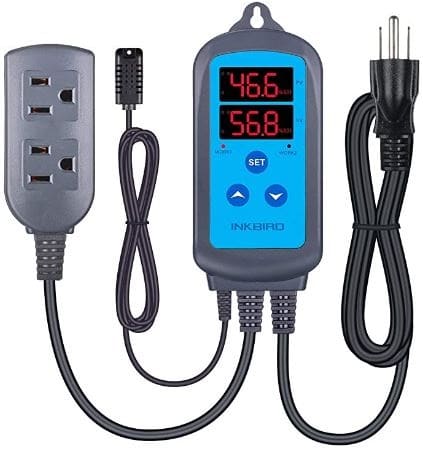
 Inkbird Humidity Controller IHC200 Humidistat
Inkbird Humidity Controller IHC200 Humidistat
- Humidity control range: 5~99%RH; Accuracy: ±3%RH
- Control humidity by setting value and differential value
- Alarm when sensor error or humidity exceeds limit
Add Extra Plants
Introducing additional plants is a natural way to boost humidity through higher rates of transpiration. The more leaf surface area in your tent, the more moisture plants will release into the air. Focus on adding vegetation with broad leaves rather than narrow, spindle-shaped leaves. Popular choices include broadleaf houseplants like philodendrons, pothos, Chinese evergreens, peace lilies, and umbrella trees.
Group plants together at one end of your tent to concentrate the humidifying effect in the plant canopy area. Just a few large houseplants can make a noticeable difference in small grow tents. Maintain good circulation between plants to prevent diseases. Increasing plant density does run the risk of overcrowding your tent if the additional plants stay long term.
FAQ
What causes high humidity in a grow room?
There are several common causes of high humidity in a grow room:
- Inadequate ventilation. Without proper air exchange, moisture can build up quickly. Ensure your exhaust fan is powerful enough and running frequently enough to remove humid air.
- Overwatering plants. Excess moisture in the growing medium leads to increased humidity as it evaporates. Water plants only when the top inch of soil is dry.
- Dense foliage. Plants release moisture through transpiration. Lots of large, leafy plants in a small space adds humidity. Maintain proper spacing and pruning.
- Outdoor climate. If you intake air from outside, humid outdoor conditions can raise humidity in the grow room. Use a dehumidifier to remove excess moisture.
- Reservoir evaporation. Open reservoirs or misters add moisture to the air as water evaporates. Use covered reservoirs and limit mister use.
What is the difference between relative and absolute humidity?
Relative humidity is the amount of moisture in the air compared to the maximum amount the air can hold at that temperature. Absolute humidity is the actual mass of water vapor per cubic meter of air. As temperature rises, the capacity of air to hold moisture increases. So relative humidity decreases when temperature increases if absolute humidity stays constant. For example, 50% relative humidity at 70°F indicates much lower absolute humidity than 50% relative humidity at 90°F.
What is the optimum humidity for seedlings?
The optimal humidity range for seedlings is around 65-70% relative humidity. Seedlings need more humidity than mature plants because their root systems are not developed enough to supply ample water to leaves and stems. High humidity reduces transpiration, preventing seedlings from drying out. It also makes it easier for roots to take up water from the growing medium.
Can low humidity be harmful to the plants?
Yes, excessively low humidity can stress plants and cause problems like tip burn, slowed growth, and susceptibility to pests and diseases. The ideal humidity range is 40-60% RH for most stages of growth. Low humidity causes faster transpiration, making it difficult for the plant to transport water from the roots to leaves fast enough to prevent wilting and desiccation.
Does the water in a grow tent contribute to the high humidity?
Yes, open reservoirs and trays of water inside a grow tent will directly increase the humidity as that water evaporates into the enclosed space. Even covered reservoirs can transmit moisture through the sides and lid of the container. Circulating fans over open water sources will also accelerate evaporation.
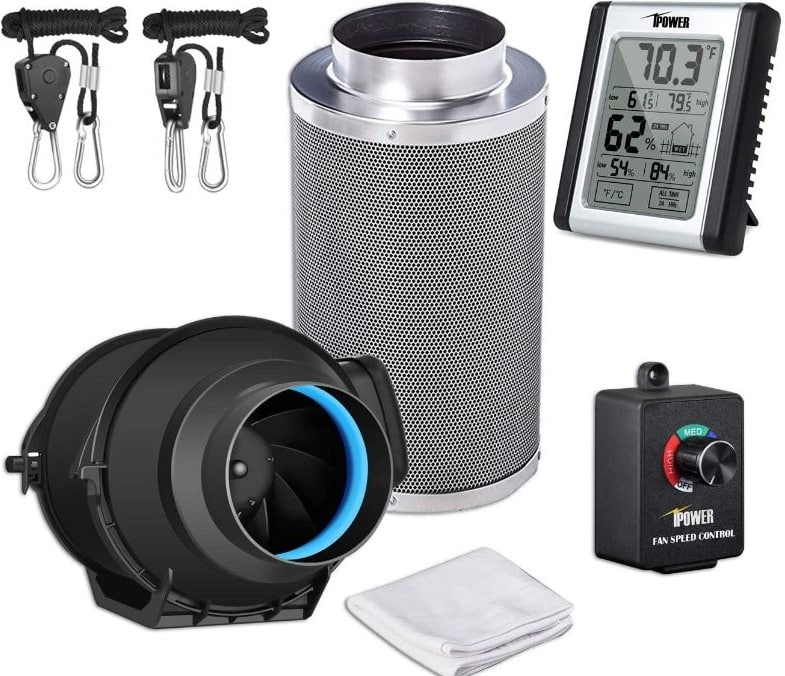
 iPower GLFANXEXPSET4CHUMD 4 Inch 118 CFM
iPower GLFANXEXPSET4CHUMD 4 Inch 118 CFM
- Inline Filter with Fan Speed Controller
- Temperature Humidity Monitor Grow Tent Ventilation
- measures humidity from 10% to 99%
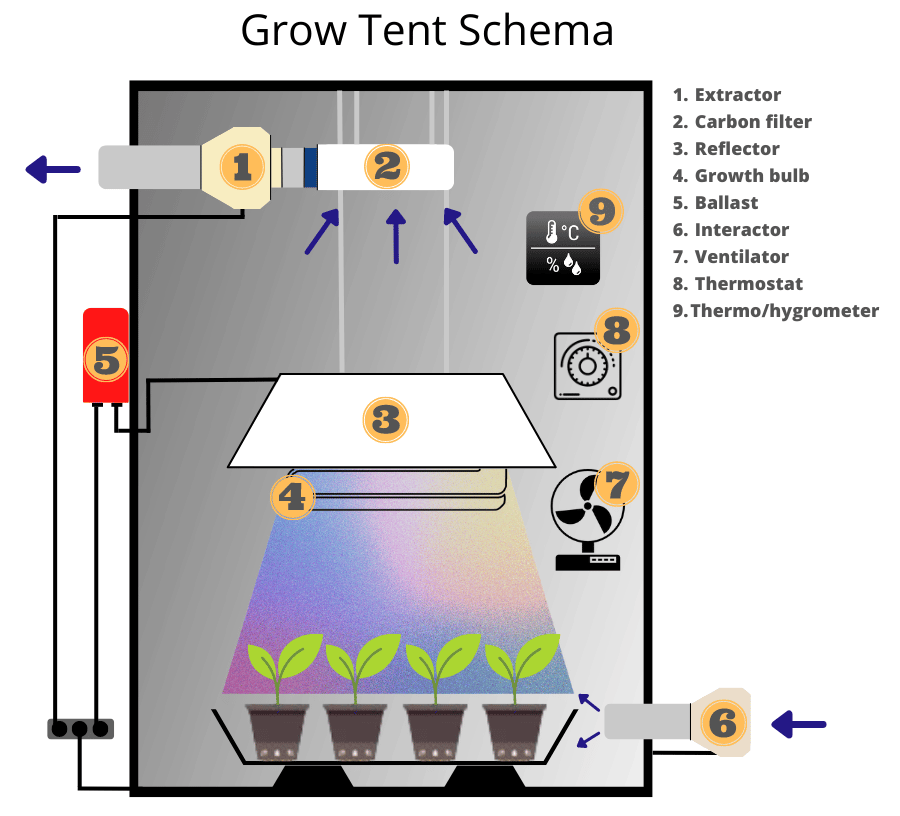
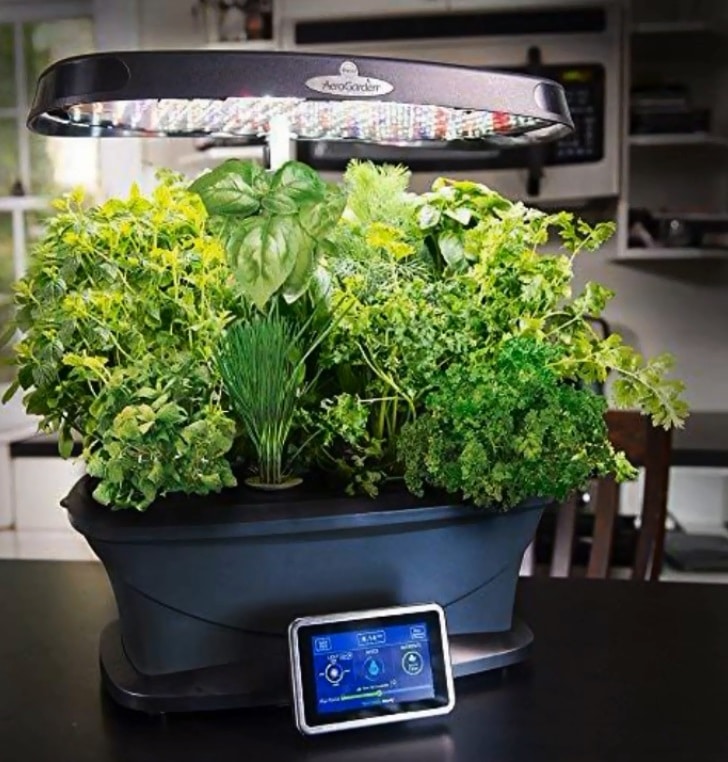
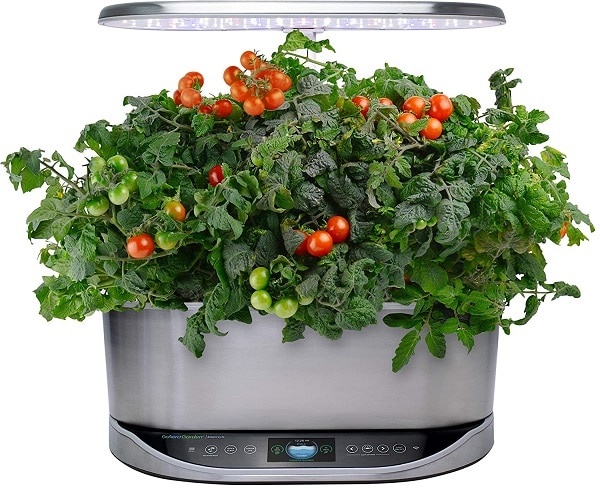
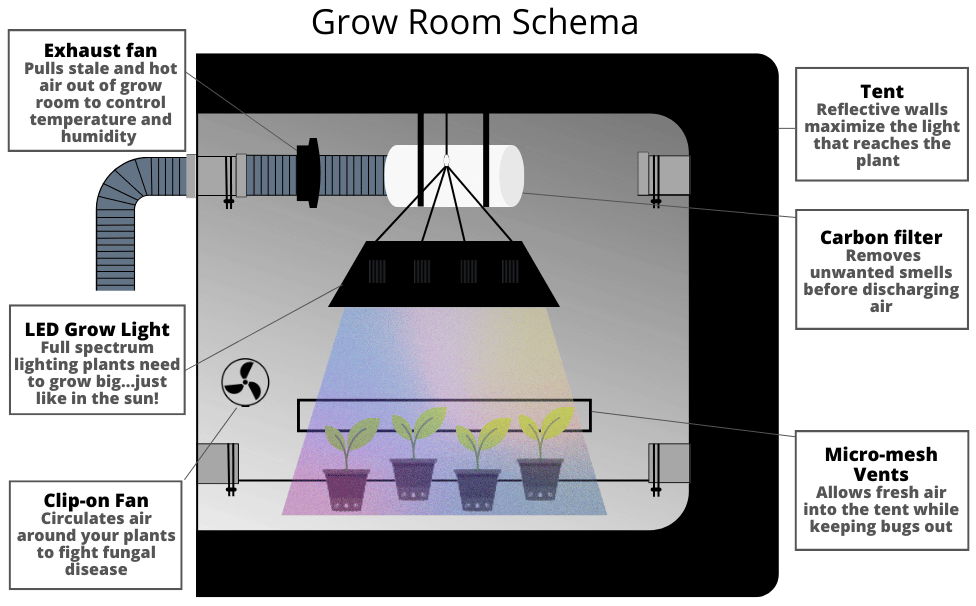
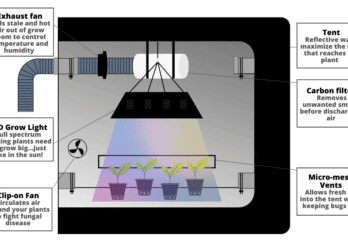
![Best Grow Tent Kits of [date template="Y"] Best Grow Tent Kits of [date template="Y"]](https://hydrogardengeek.com/wp-content/uploads/2021/01/p51-VIVOSUN-2-in-1-Grow-Tent-Best-for-Growing-Two-Different-Plant-Types.jpg)
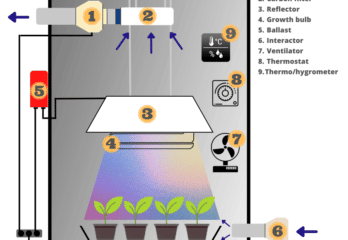
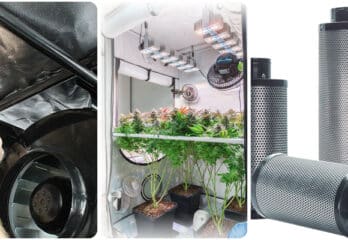


Leave a Reply